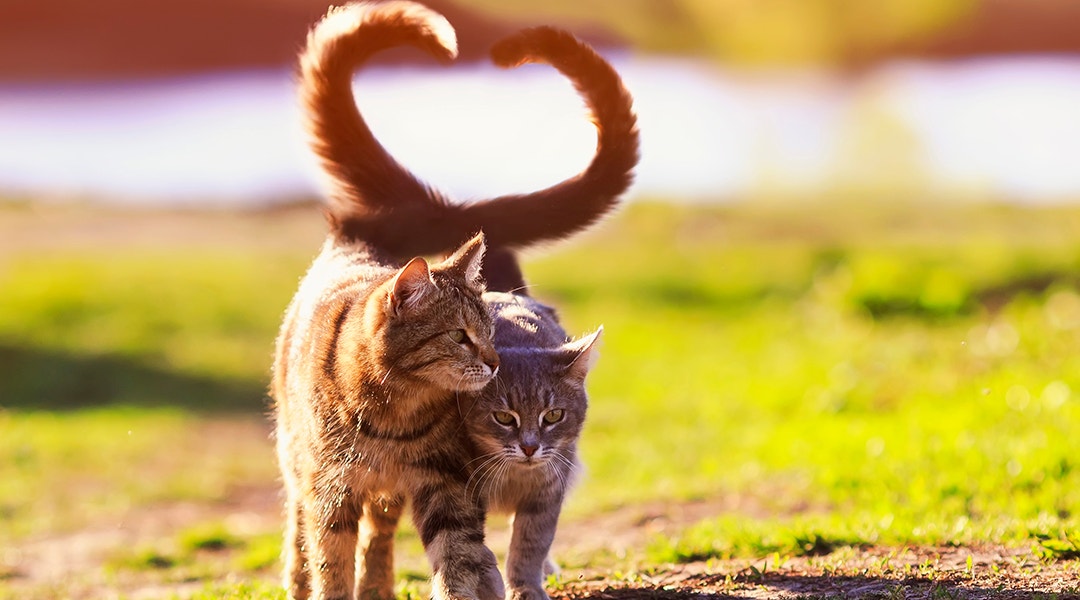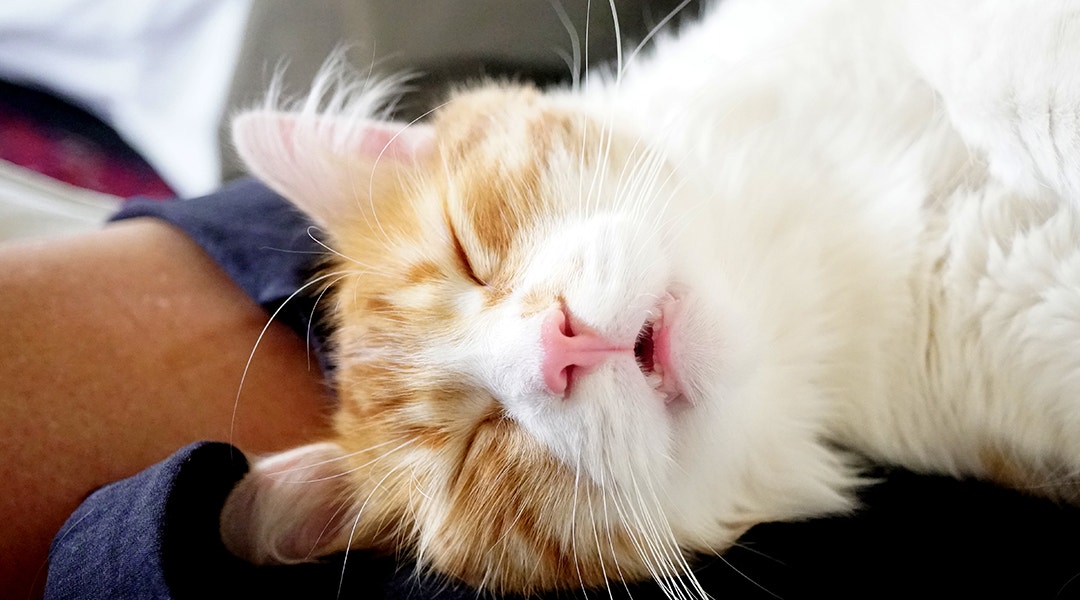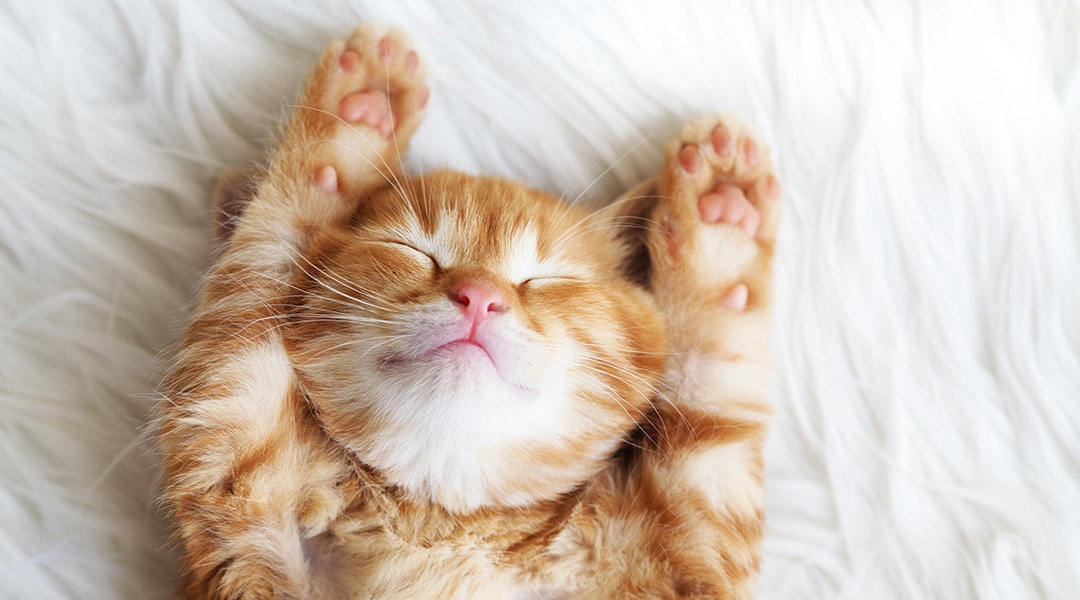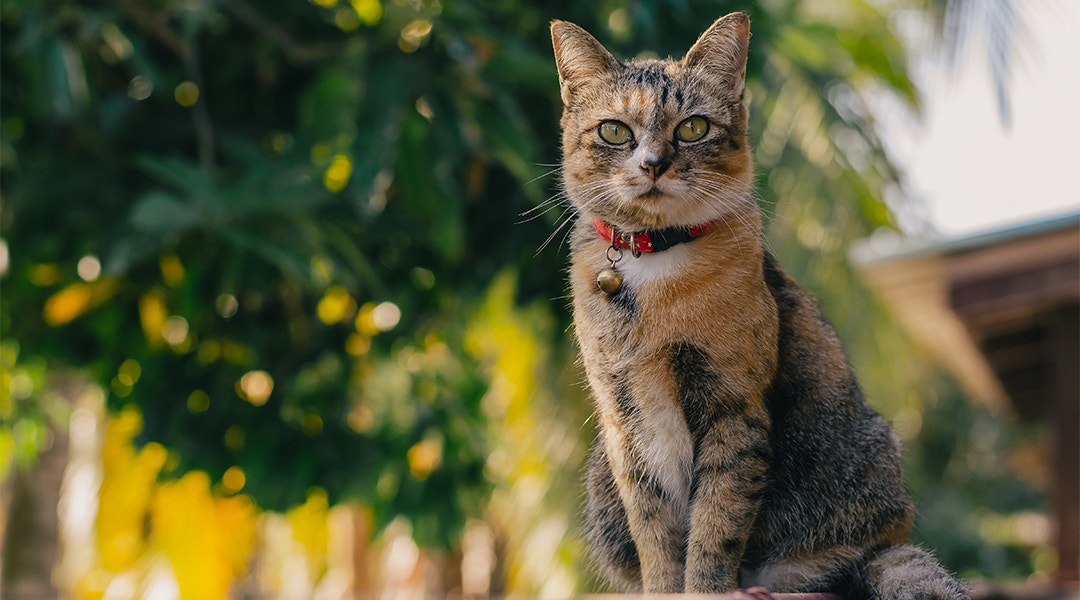When you first brought your cat home, you were probably not expecting some canine behaviours - like tail-wagging. In fact, it’s actually incredibly common for cats to wag their tails, and you can tell a lot about their mood or intentions through their tail movements - similarly to how cats purr.
There are many reasons why cats wag their tails, unlike dogs, who usually wag when they’re happy. Different tail movements have different meanings, and by understanding your cat’s tail behaviour, you can be better attuned to what they’re feeling. This gives you an opportunity to meet their needs and wants, improving your relationship and nourishing your bond together.
Four reasons why cats wag their tails
We know there are many reasons why cats wag their tails - but what are they? A cat’s tail serves as an important communication tool for them to express their feelings and reactions about the situation at hand. We’ve listed four primary reasons below, including emotional triggers, environmental influences, social communication, and health-related causes.
Emotional triggers
Cats often express their emotions through their tail movements, whether it’s excitement, anger, or fear. Depending on the exact emotion, your cat’s tail will move in a different way.
For instance, a slow and swishing tail indicates your cat may be either curious or content. If their tail is flicking rapidly, this can mean agitation or irritation. If your cat is frightened, their tail might puff up to help them appear to be larger and threatening, while also growling. By understanding your cat’s emotional triggers, you can respond accordingly.
Environmental influences
Cats may also react to environmental influences with their tail movements. If your cat is experiencing changes in their environment, such as the presence of new people or pets, unfamiliar objects, or sudden noises, they may feel alert and wary. You may notice your cat’s tail flicking or twitching as they adjust and process the new situation. Once they feel secure, their tail movement will be more gentle, or if they feel stressed, the movement may become more rapid.
Social Communication
Another possible reason why your cat wags their tail is to communicate with other cats as well as humans. They may be signalling confidence and friendliness if their tail is held high, inviting the other to interact with them. However, if their tail is low or tucked in, it can suggest anxiety or nervousness, and in this case, they may want space. Their tail may even twitch slowly if they are feeling slightly annoyed, or if they are focused on something like a bird, which is also why cats chirp.
Health-Related Causes
While the cause of why your cat wags their tail is usually not concerning, it can indicate a health issue. Your cat may be experiencing discomfort, pain, or irritation if they’re wagging their tail more often than usual. This could be due to an injury or skin problem near the tail. Although unlikely, if your cat has a neurological problem, it can also cause abnormal tail movements. It’s important to be aware of your cat’s usual behaviours, as if they suddenly start wagging their tail and it’s inconsistent with the present situation, you might want to consult a veterinarian.
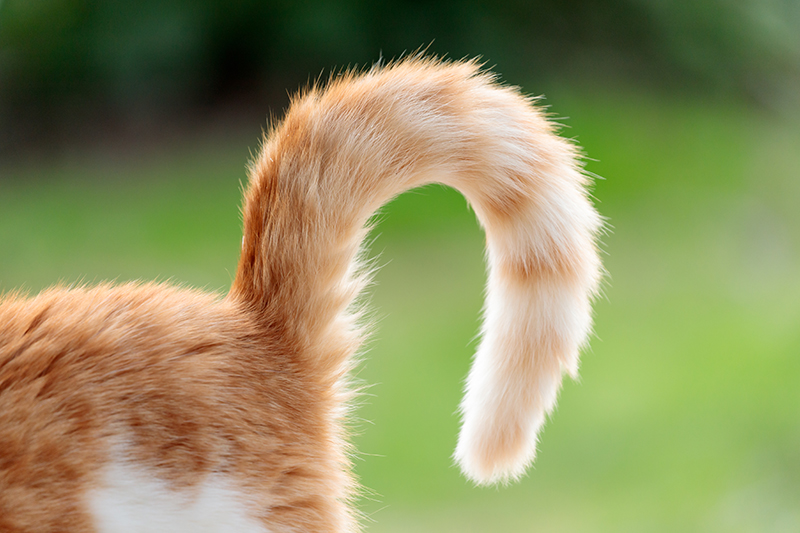
What does it mean when a cat wags their tail?
Depending on how your cat wags their tail, it can mean several things. Different tail movements can indicate different emotional states. Whether it’s curiosity, irritation, playfulness, excitement, contentment, or fear. By properly interpreting their tail wagging, along with your cat’s meowing, you can respond to their feelings accordingly. We explore this further below.
Different types of tail wagging (and what they mean)
While there are many different types, we look at a few variations of how cats wag their tails below.
Slow and steady swishing
Slow and steady swishing of the tail often indicates an attentive and thoughtful cat, and your cat is likely feeling calm and focused. They may be observing their surroundings, concentrating on something particular, or contemplating their next move. It’s a good way to know your cat is engaging but not stressed or upset by the situation.
If their tail is held up high in the air while also calmly swishing, it shows confidence and contentment. It may even be your cat’s way of greeting you!
Quick and sharp flicks
Another way cats wag their tails is through quick and sharp flicks, which you’ll see if your cat is feeling irritated or frustrated. If you notice your cat’s tail suddenly flicking back and forth, they are likely either annoyed or overstimulated about something. For instance, if you’re petting or playing with your cat, they may be reaching their tolerance.
On the other hand, your cat could feel annoyed about something in their environment. By identifying when your cat is beginning to feel triggered, you can help monitor and diffuse the situation by either giving them space or removing the provocation.
Puffed-up tail
A common reason why cats wag their tail is if they’re feeling threatened. If your cat feels defensive or like they’re in danger, they may puff up their tail as a way to appear bigger and more intimidating to whatever is scaring them. This is usually to deter another cat, dog, pet, or object away from them. They may also arch their back alongside their puffed-up tail, as well as hissing. At this point, it’s crucial to remove the threat and give your cat space; otherwise, an attack may follow.
Quivering tail
Cats also wag their tail if they’re feeling excited. In this case, the tip of the tail may be slightly quivering while held up high in the air. Your cat may be excited to see you, to play with a toy, or if they see a potential prey like a bird from the window. If they’re getting ready to pounce, you might also see your cat crouched low, or hear a chattering noise.
Why do cats wag their tails while lying down?
There are also specific reasons why cats wag their tails while lying down. Often, it’s a sign that cats are feeling content and relaxed, especially if the movements are slow and gentle. If they’re asleep, it may just be a part of their REM cycle.
However, your cat wagging their tail while laying down could also mean they’re still alert and aware of their surroundings. If their tail begins to flick quickly or twitch sharply, they may be feeling slightly irritated or impatient. Your cat could be warning others not to disturb them. It could also mean your cat is preparing to pounce or play.
It’s important to notice these subtle tail movements to understand exactly why your cat’s tail is wagging while laying down. If you notice any other symptoms of discomfort, pain, restlessness, or loss of appetite, you should consult a veterinarian.
Why do cats shake their tails?
Instead of wagging, cats may also shake their tails instead. This is a subtle difference, but it can indicate different emotions. Shaking is usually sharper and more intense than wagging. For instance, if your cat is shaking their tail vigorously, this may show a more extreme emotion - whether it’s excitement or frustration.
You may also notice other body language that can help you clarify why your cat is shaking their tail. Cats may also shake their tails to release tension, share that they’re overstimulated, or signal they’re ready to pounce.
Why do cats wag their tails in summary
There are many reasons why cats wag their tails. Depending on how your cat is feeling and the situation they’re in will determine how their tail will move. By understanding your cat’s exact tail behaviour, you can address their feelings and ensure your cat feels safe and secure in any situation. Meeting your cat’s needs will not only improve communication between you but also strengthen your relationship and ensure your cat’s overall health and well-being. Rewarding your cat with our treats is another great way to deepen your bond.
Why do cats wag their tails FAQs
Do cats wag their tails when happy?
No, cats rarely wag their tails when they’re happy. While this is typical of dogs, cats usually express their contentment through purring and sometimes a slow and gentle sway or upright position of their tail. There are many reasons why cats wag their tails, depending on the emotion they’re communicating.
When cats flick their tails, it means they are what?
One of the ways that cats wag their tails is by flicking it. In this case, it usually means that your cat is feeling either annoyed or overstimulated. By flicking their tail back and forth in a quick and sharp form, it’s usually a warning that your cat needs space.
Why do cats raise their butts when you pet them?
If your cat raises their rear when you pet them, it’s actually a positive sign that they are enjoying the attention and affection from you and would like it to continue. It also shows your cat trusts you, especially enough to receive more petting near the base of their tail.
What does it mean if a cat licks you?
If a cat licks you, it’s their way of showing love and affection to you. It’s a positive sign that your cat deeply trusts you and feels comfortable in your company. It could also be that they’re seeking your attention to play or trying to soothe themselves.

